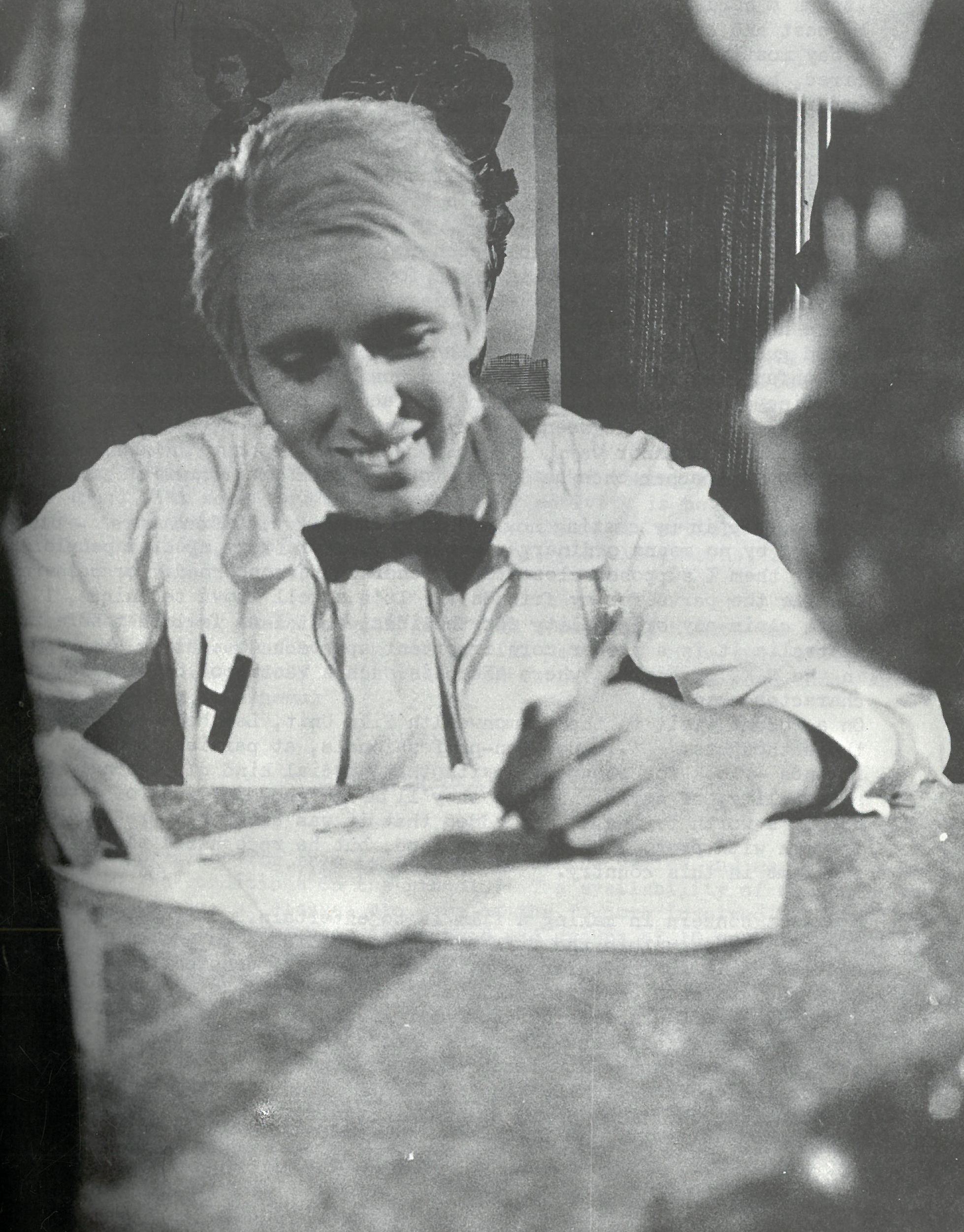- Homesdale – 16mm, B/W, 53 minutes.
The film was photographed at Church Point in Sydney during March 1971. The bulk of the film was shot in a 5 day period, then on two successive week-ends.
2. Scripting was completed in February with my co-writer Piers Davies. Piers is a New Zealand solicitor who had come over to Sydney to spend his holidays with me. It’s rather curious – Piers a solicitor, James Dellit, my cousin, played the manager of Homesdale and he’s a teacher, Geoff Malone who played ‘Mr. Malfry’ is an architect, as is Grahame Bond (Mr Kevin) and ‘Chief Robert’, Kosta Akon. 3 architects, 1 solicitor, 1 teacher. A strange crew.
3. During the five day shooting period most of the cast and crew lived in my house at Church Point. The house is of-course Homesdale. That meant about 20–25 people sleeping amongst the props in the lounge room, under mosquito nets on the verandah, and in a number of tents on the back lawn. It was a nightmare. The reason for all this was nothing more than economic.
4. BUDGET – I had a grant of $1,912 from the Experimental Film Fund. This was a grant not a loan. Approximately $2000 more was needed and this was raised from private individuals. Most cast and crew worked for deferred salaries. They were all paid when the film was sold to the ATN network for $7,000. ATN has so far only run the film in Melbourne, where it was enthusiastically received by Pentridge Gaol film society. They were allowed to watch the film on T.V. inside the prison and were interested enough to want to see it again, so ATN with my permission sent the copy to the prison. Interesting to speculate as to why it appealed to the prisoners – it could be the claustrophobic ‘prison’ atmosphere at Homesdale, the authoritarian staff, the mental cruelty the guests practise on each other – who knows? The film was also recently purchased by the Visual Arts section of the Adelaide Education Department for screening and discussion in S.A. schools.
5. It was a hard film to make for all concerned. As well as the tension of cast and crew living together, the hours are very long – 16 hours a day mostly. The film seemed to be jinxed, or perhaps we were just tired, but accidents kept happening. Geoff Malone fell into the camera and had to be taken to hospital for 1/2 dozen stitches. I was shot in the arm with, amazingly, a blank shot-gun cartridge and was also taken to hospital. Mr. Lear, the old man in the film, fell over a cliff, and for no reason at all a china lampshade dropped from the ceiling onto the continuity girl’s typewriter, missing her by inches.
6. James Dellit is a high-school teacher. His head master gave him a few days off to make the film. He found strange things happening playing the part of the authoritarian manager, especially in the scene when he accuses little Mr. Malfry of not ‘joining in’ and of not being a ‘good guest’. In the scene James plays a few psychological tricks not unfamiliar to teachers. To play a person’s weaknesses, to chastise then encourage, to slap the face then smile, and pat the back. James hated doing the scene, said he realized he’d done it before with students, in a minor way. He said he could see anew the dangers that confront a teacher once he learns to play ‘the power game’.
7. You can see in my casting how I prefer to work with ‘amateurs’ – but they’re by no means ordinary amateurs, they are very special people. I cast them I suppose, close to the characters concerned, (or rather I write the parts for my friends). It’s a well known technique, I don’t claim any originality for the idea; but I do feel that here in Australia it is a rather more important approach to casting than say in the U.K. or America where there is such a vast pool of excellent character actors.
On a recent visit to the Commonwealth Film Unit, Leo McKern echoed these thoughts. ‘… use non-professionals, at parties, amongst friends – look for the person with that special kind of presence, of personality, of style. Maybe they’ll be no good in front of a camera but it’s worth trying.’ He added that it was certainly preferable to work with pros. when they were good, but he recognized the special problems in this country.
8. My first concern in making a film is to entertain. Any points of view I express within the film must be subordinate to the entertainment. While scripting or shooting or editing I constantly ask myself what the audience reaction will be to this or that. It’s curious with Homesdale, screenings to small audiences generally produce comments to the effect that the film is more ‘black’ than ‘comedy’. It’s the other way around with large audiences.
As for the ‘points of view’ in Homesdale I don’t think it worth elaborating, the film should speak for itself.





